|
Film Sub-Genres
|
Sub-Genre Types
(represented by icons)
|
Sub-Genre Descriptions
|
|
Select an
icon or sub-genre category below, read about the development
and history of the sub-genre, and view chronological lists of selected,
representative greatest films for each one (with links to detailed descriptions
of individual films).
|

|
 'Biopics' is a term derived
from the combination of the words "biography" and "pictures."
They are a sub-genre of the larger drama and epic film genres, and although
they reached a hey-day of popularity in the 1930s, they are still
prominent to this day. These films depict the life of an important
historical personage (or group) from the past or present era. Biopics
cross many genre types, since these films might showcase a western
outlaw, a criminal, a musical composer, a religious figure, a war-time
hero, an entertainer, an artist, an inventor or doctor, a politician
or President, or an adventurer. 'Biopics' is a term derived
from the combination of the words "biography" and "pictures."
They are a sub-genre of the larger drama and epic film genres, and although
they reached a hey-day of popularity in the 1930s, they are still
prominent to this day. These films depict the life of an important
historical personage (or group) from the past or present era. Biopics
cross many genre types, since these films might showcase a western
outlaw, a criminal, a musical composer, a religious figure, a war-time
hero, an entertainer, an artist, an inventor or doctor, a politician
or President, or an adventurer. |

|
 Often
considered an all-encompassing sub-genre, 'chick' flicks or
gal films (slightly derisive terms) mostly include formulated
romantic comedies (with
mis-matched lovers or female relationships), melodramatic
tearjerkers and
gal-pal films, movies about family crises and emotional carthasis,
some traditional 'weepies' and fantasy-action adventures,
sometimes with foul-mouthed and empowered females, and female
bonding situations involving families, mothers, daughters,
children, women, and women's issues. These films are often
told from the female P-O-V, and star a female protagonist
or heroine. This type of film became very prominent in the
mid-80s and into the 90s. See also O Magazine's 50
Greatest Chick Flicks. Their counterpart films for
males are termed 'guy' films (see
below). See also this site's compilation of Greatest
Tearjerker Films, Moments and Scenes. Often
considered an all-encompassing sub-genre, 'chick' flicks or
gal films (slightly derisive terms) mostly include formulated
romantic comedies (with
mis-matched lovers or female relationships), melodramatic
tearjerkers and
gal-pal films, movies about family crises and emotional carthasis,
some traditional 'weepies' and fantasy-action adventures,
sometimes with foul-mouthed and empowered females, and female
bonding situations involving families, mothers, daughters,
children, women, and women's issues. These films are often
told from the female P-O-V, and star a female protagonist
or heroine. This type of film became very prominent in the
mid-80s and into the 90s. See also O Magazine's 50
Greatest Chick Flicks. Their counterpart films for
males are termed 'guy' films (see
below). See also this site's compilation of Greatest
Tearjerker Films, Moments and Scenes. |

|
 One
of the best subject areas for dramatic
films (or sometimes
crime films) are suspenseful,
law-related courtroom trials, which pit lawyers against each
other, and set up a tense one-on-one conflict between a prosecutor
and a defendant. Sometimes, the protagonists are a "little" guy
(an individual) against a "big" guy (or corporation),
or the more abstract "good" vs. "evil," or
they often involve wider issues, such as race, sex, capital
punishment (life and death), and morality. And
of course, courtroom dramas usually contain some of the most
fascinating thematic elements in film -- murder, betrayal,
deception, perjury and sex. They often feature unexpected
twists and surprise testimony, unusual motives, moral dilemmas,
crusading lawyers and wrongly-accused victims. AFI defined
the courtroom drama as "a genre of film in which a system
of justice plays a critical role in the film's narrative." See
this site's special feature highlighting the Greatest
Courtroom Dramas. One
of the best subject areas for dramatic
films (or sometimes
crime films) are suspenseful,
law-related courtroom trials, which pit lawyers against each
other, and set up a tense one-on-one conflict between a prosecutor
and a defendant. Sometimes, the protagonists are a "little" guy
(an individual) against a "big" guy (or corporation),
or the more abstract "good" vs. "evil," or
they often involve wider issues, such as race, sex, capital
punishment (life and death), and morality. And
of course, courtroom dramas usually contain some of the most
fascinating thematic elements in film -- murder, betrayal,
deception, perjury and sex. They often feature unexpected
twists and surprise testimony, unusual motives, moral dilemmas,
crusading lawyers and wrongly-accused victims. AFI defined
the courtroom drama as "a genre of film in which a system
of justice plays a critical role in the film's narrative." See
this site's special feature highlighting the Greatest
Courtroom Dramas.
|
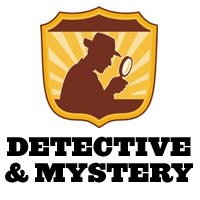
|
  Detective-mystery films
are usually considered a sub-type or sub-genre of crime/gangster films (or film noir), or suspense
or thriller films that focus on the unsolved crime (usually
the murder or disappearance of one or more of the characters, or
a theft), and on the central character - the hard-boiled detective-hero,
as he/she meets various adventures and challenges in the cold and
methodical pursuit of the criminal or the solution to the crime. Detective-mystery films
are usually considered a sub-type or sub-genre of crime/gangster films (or film noir), or suspense
or thriller films that focus on the unsolved crime (usually
the murder or disappearance of one or more of the characters, or
a theft), and on the central character - the hard-boiled detective-hero,
as he/she meets various adventures and challenges in the cold and
methodical pursuit of the criminal or the solution to the crime. |

|
 Disaster films, a sub-genre
of action films, hit their
peak in the decade of the 1970s. Big-budget disaster films provided
all-star casts and interlocking, Grand Hotel-type stories,
with suspenseful action and impending crises (man-made or natural)
in locales such as aboard imperiled airliners, trains, dirigibles,
sinking or wrecked ocean-liners, or in towering burning skyscrapers,
crowded stadiums or earthquake zones. Often noted for their visual
and special effects, but not their acting performances. See Greatest
Disaster Film Scenes also. Disaster films, a sub-genre
of action films, hit their
peak in the decade of the 1970s. Big-budget disaster films provided
all-star casts and interlocking, Grand Hotel-type stories,
with suspenseful action and impending crises (man-made or natural)
in locales such as aboard imperiled airliners, trains, dirigibles,
sinking or wrecked ocean-liners, or in towering burning skyscrapers,
crowded stadiums or earthquake zones. Often noted for their visual
and special effects, but not their acting performances. See Greatest
Disaster Film Scenes also. |
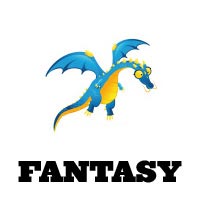
|
 Fantasy
films, usually considered a sub-genre, are most likely
to overlap with the film genres of science
fiction and horror,
although they are distinct. Fantasies take the audience to
dark netherworld places (or another dimension) with mythical
creatures, where events are unlikely to occur in real life
- they transcend the bounds of human possibility and physical
laws. They sometimes take the form of fairy tales that
often have elements of magic, myth, wonder, folklore and the
extraordinary. Fantasy films can assume epic proportions
(multi-episodic), usually when based on ancient Greek writings
or more contemporary works. Heroic fantasies follow
a hero-character who overcomes various obstacles on a quest. Sword-and
sorcery fantasies are another sub-type. One of the major
categories of fantasy-action films
are the super-hero movies,
based quite often on an original comic-strip or comic book
character. They may appeal to both children and adults, depending
upon the particular film. Fantasy
films, usually considered a sub-genre, are most likely
to overlap with the film genres of science
fiction and horror,
although they are distinct. Fantasies take the audience to
dark netherworld places (or another dimension) with mythical
creatures, where events are unlikely to occur in real life
- they transcend the bounds of human possibility and physical
laws. They sometimes take the form of fairy tales that
often have elements of magic, myth, wonder, folklore and the
extraordinary. Fantasy films can assume epic proportions
(multi-episodic), usually when based on ancient Greek writings
or more contemporary works. Heroic fantasies follow
a hero-character who overcomes various obstacles on a quest. Sword-and
sorcery fantasies are another sub-type. One of the major
categories of fantasy-action films
are the super-hero movies,
based quite often on an original comic-strip or comic book
character. They may appeal to both children and adults, depending
upon the particular film. |
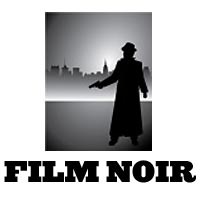
|
 Film
noir (meaning
'black film') is a distinct branch of the crime/gangster sagas
from the 1930s. Strictly speaking, film noir is not a
genre, but rather the mood, style or tone of various American
films that evolved in the 1940s, and lasted in a classic period
until about 1960. However, film noir has not been exclusively
confined to this era, and has re-occurred in cyclical form in
other years in various neo-noirs. Noirs are usually black and
white films with primary moods of melancholy, alienation, bleakness,
disillusionment, disenchantment, pessimism, ambiguity, moral
corruption, evil, guilt and paranoia. And they often feature
a cynical, loner hero (anti-hero) and femme fatale, in
a seedy big city. See this site's special tribute to Greatest
Femmes Fatales in Classic Film Noir. Film
noir (meaning
'black film') is a distinct branch of the crime/gangster sagas
from the 1930s. Strictly speaking, film noir is not a
genre, but rather the mood, style or tone of various American
films that evolved in the 1940s, and lasted in a classic period
until about 1960. However, film noir has not been exclusively
confined to this era, and has re-occurred in cyclical form in
other years in various neo-noirs. Noirs are usually black and
white films with primary moods of melancholy, alienation, bleakness,
disillusionment, disenchantment, pessimism, ambiguity, moral
corruption, evil, guilt and paranoia. And they often feature
a cynical, loner hero (anti-hero) and femme fatale, in
a seedy big city. See this site's special tribute to Greatest
Femmes Fatales in Classic Film Noir. |

|
 Composed of macho films
that are often packed with sophomoric humor, action, cartoon violence,
competition, mean-spirited putdowns and gratuitous nudity and sex.
Gal films or 'chick'
flicks are their counterpart for females. This category of film is highly subject to opinion, although there
are many classic, testosterone-laden 'guy' films that most viewers
would agree upon, as shown in this site's Greatest 'Guy' Movies of All-Time (illustrated). See also the "100
Greatest Guy Movies Ever Made" by Maxim Magazine compiled in 1998 or Men's Journal's 50 Best Guy Movies
of All Time list compiled in 2003. Composed of macho films
that are often packed with sophomoric humor, action, cartoon violence,
competition, mean-spirited putdowns and gratuitous nudity and sex.
Gal films or 'chick'
flicks are their counterpart for females. This category of film is highly subject to opinion, although there
are many classic, testosterone-laden 'guy' films that most viewers
would agree upon, as shown in this site's Greatest 'Guy' Movies of All-Time (illustrated). See also the "100
Greatest Guy Movies Ever Made" by Maxim Magazine compiled in 1998 or Men's Journal's 50 Best Guy Movies
of All Time list compiled in 2003. |
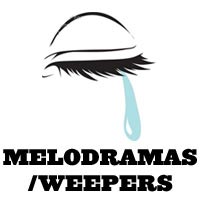
|
 Melodramas
are a sub-type of drama films,
characterized by a plot to appeal to the emotions of the audience.
Often, film studies criticism used the term 'melodrama' pejoratively
to connote an unrealistic, pathos-filled tales of romance
or domestic situations with stereotypical characters that
would directly appeal to feminine audiences ("weepies" or "woman's
films"). See
the post-modern version of the "woman's film" - gal
films or 'chick' flicks.
See also this site's extensive compilation (illustrated) of Greatest
Tearjerker Films, Moments and Scenes. Melodramas
are a sub-type of drama films,
characterized by a plot to appeal to the emotions of the audience.
Often, film studies criticism used the term 'melodrama' pejoratively
to connote an unrealistic, pathos-filled tales of romance
or domestic situations with stereotypical characters that
would directly appeal to feminine audiences ("weepies" or "woman's
films"). See
the post-modern version of the "woman's film" - gal
films or 'chick' flicks.
See also this site's extensive compilation (illustrated) of Greatest
Tearjerker Films, Moments and Scenes. |

|
 Road films have been a staple of
American films from the very start, and have ranged in genres
from westerns, comedies, gangster/crime films, dramas,
and action-adventure films. One thing they all have in common: an episodic journey
on the open road (or undiscovered trail), to search for escape
or to engage in a quest for some kind of goal -- either a distinct
destination, or the attainment of love, freedom, mobility, redemption,
the finding or rediscovering of onself, or coming-of-age (psychologically
or spiritually). Road films have been a staple of
American films from the very start, and have ranged in genres
from westerns, comedies, gangster/crime films, dramas,
and action-adventure films. One thing they all have in common: an episodic journey
on the open road (or undiscovered trail), to search for escape
or to engage in a quest for some kind of goal -- either a distinct
destination, or the attainment of love, freedom, mobility, redemption,
the finding or rediscovering of onself, or coming-of-age (psychologically
or spiritually). |

|
 A sub-genre for
the most part, this category shares some features with romantic dramas,
romantic comedies ("rom-coms"),
and sexual/erotic films,
and have often been derogatorily called chick
flicks (see above). These
are love stories, or affairs of the heart that center on
passion, emotion, and the romantic, affectionate involvement
of the main characters (usually a leading man and lady),
and the journey that their love takes through courtship or
marriage. Romance films make the love story the main plot
focus. See Greatest
and Most Memorable Film Kisses Scenes. A sub-genre for
the most part, this category shares some features with romantic dramas,
romantic comedies ("rom-coms"),
and sexual/erotic films,
and have often been derogatorily called chick
flicks (see above). These
are love stories, or affairs of the heart that center on
passion, emotion, and the romantic, affectionate involvement
of the main characters (usually a leading man and lady),
and the journey that their love takes through courtship or
marriage. Romance films make the love story the main plot
focus. See Greatest
and Most Memorable Film Kisses Scenes. |

|
 Films that have a sports
setting (football or baseball stadium, arena, or the Olympics, etc.),
event (the 'big game,' 'fight,' 'race,' or 'competition'), and/or
athlete (boxer, racer, surfer, etc.) that are central and predominant
in the story. Sports films may be fictional or non-fictional; and
they are a hybrid sub-genre category, although they are often dramas or comedy films, and occasionally
documentaries or biopics. Films that have a sports
setting (football or baseball stadium, arena, or the Olympics, etc.),
event (the 'big game,' 'fight,' 'race,' or 'competition'), and/or
athlete (boxer, racer, surfer, etc.) that are central and predominant
in the story. Sports films may be fictional or non-fictional; and
they are a hybrid sub-genre category, although they are often dramas or comedy films, and occasionally
documentaries or biopics. |
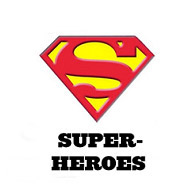
|
 This
category is an off-shoot of
fantasy-action films,
based quite often on an original comic-strip or comic book
character. Fictional super-heroes with extraordinary powers,
derived from 1930s-1960s comic books and other more recent
sources, have been the subjects of numerous fantasy and sci-fi
films (both live-action and animated, and serialized and feature-length)
with action-oriented heroes and heroines. Superheroes are repeatedly
chosen to be the subjects of big-budget blockbuster films,
with glossy production values, expensive CGI special effects
and sets, make-up and costuming. Usually, a simplistic plot
line involves the superhero's struggle against an arch-nemesis
or super-villain (usually interested in world domination, the
acquisition of riches, or the wreaking of vengeance). This
category is an off-shoot of
fantasy-action films,
based quite often on an original comic-strip or comic book
character. Fictional super-heroes with extraordinary powers,
derived from 1930s-1960s comic books and other more recent
sources, have been the subjects of numerous fantasy and sci-fi
films (both live-action and animated, and serialized and feature-length)
with action-oriented heroes and heroines. Superheroes are repeatedly
chosen to be the subjects of big-budget blockbuster films,
with glossy production values, expensive CGI special effects
and sets, make-up and costuming. Usually, a simplistic plot
line involves the superhero's struggle against an arch-nemesis
or super-villain (usually interested in world domination, the
acquisition of riches, or the wreaking of vengeance). |

|
 Supernatural films, a sub-genre category, may be combined with other genres, including comedy, sci-fi, fantasy or horror.
They have themes including gods or goddesses, ghosts, apparitions,
spirits, miracles, and other similar ideas or depictions of extraordinary
phenomena. Interestingly however, until recently, supernatural films
were usually presented in a comical, whimsical, or a romantic fashion,
and were not designed to frighten the audience. There are also many
hybrids that have combinations of fear, fantasy, horror, romance,
and comedy. Supernatural films, a sub-genre category, may be combined with other genres, including comedy, sci-fi, fantasy or horror.
They have themes including gods or goddesses, ghosts, apparitions,
spirits, miracles, and other similar ideas or depictions of extraordinary
phenomena. Interestingly however, until recently, supernatural films
were usually presented in a comical, whimsical, or a romantic fashion,
and were not designed to frighten the audience. There are also many
hybrids that have combinations of fear, fantasy, horror, romance,
and comedy. |
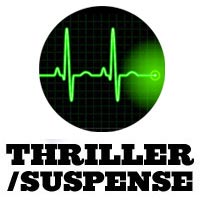
|
  Thrillers are often hybrids
with other genres - there are action-thrillers, crime-caper thrillers, western-thrillers, film-noir thrillers, even romantic
comedy-thrillers. Another closely-related genre is the horror film genre. Thriller and suspense films are virtually synonymous
and interchangeable categorizations. They are types of films known
to promote intense excitement, suspense, a high level of anticipation,
ultra-heightened expectation, uncertainty, anxiety, and nerve-wracking
tension. The acclaimed Master of Suspense is Alfred Hitchcock. Spy
films may be considered a type of thriller/suspense film. Thrillers are often hybrids
with other genres - there are action-thrillers, crime-caper thrillers, western-thrillers, film-noir thrillers, even romantic
comedy-thrillers. Another closely-related genre is the horror film genre. Thriller and suspense films are virtually synonymous
and interchangeable categorizations. They are types of films known
to promote intense excitement, suspense, a high level of anticipation,
ultra-heightened expectation, uncertainty, anxiety, and nerve-wracking
tension. The acclaimed Master of Suspense is Alfred Hitchcock. Spy
films may be considered a type of thriller/suspense film. |

|
 Zombie
Films had their origins in the earliest films within the horror
genre that were about the 'raising of the dead,' such
as the Frankenstein films,
and the early German expressionistic film The Cabinet of Dr.
Caligari (1920, Germ.). The zombie
film craze started with
the Haitian concept of voudou, where a corpse was reanimated
and magically controlled by a witch-like bokor (a type
of priest, sorcerer, magician, or practitioner). The first feature-length
walking-dead film was director Victor Halperin's cheaply-made White
Zombie (1932). It was the decade of the 1960s that ushered in
a revolutionary new horror subgenre of zombie pics, from the "Master
of the Zombie Film" himself, George A. Romero. The influence of
Romero on future zombie films has been phenomenal, and many zombie
films in their wake have been imaginative derivatives or mutated examples. Zombie
Films had their origins in the earliest films within the horror
genre that were about the 'raising of the dead,' such
as the Frankenstein films,
and the early German expressionistic film The Cabinet of Dr.
Caligari (1920, Germ.). The zombie
film craze started with
the Haitian concept of voudou, where a corpse was reanimated
and magically controlled by a witch-like bokor (a type
of priest, sorcerer, magician, or practitioner). The first feature-length
walking-dead film was director Victor Halperin's cheaply-made White
Zombie (1932). It was the decade of the 1960s that ushered in
a revolutionary new horror subgenre of zombie pics, from the "Master
of the Zombie Film" himself, George A. Romero. The influence of
Romero on future zombie films has been phenomenal, and many zombie
films in their wake have been imaginative derivatives or mutated examples. |
















